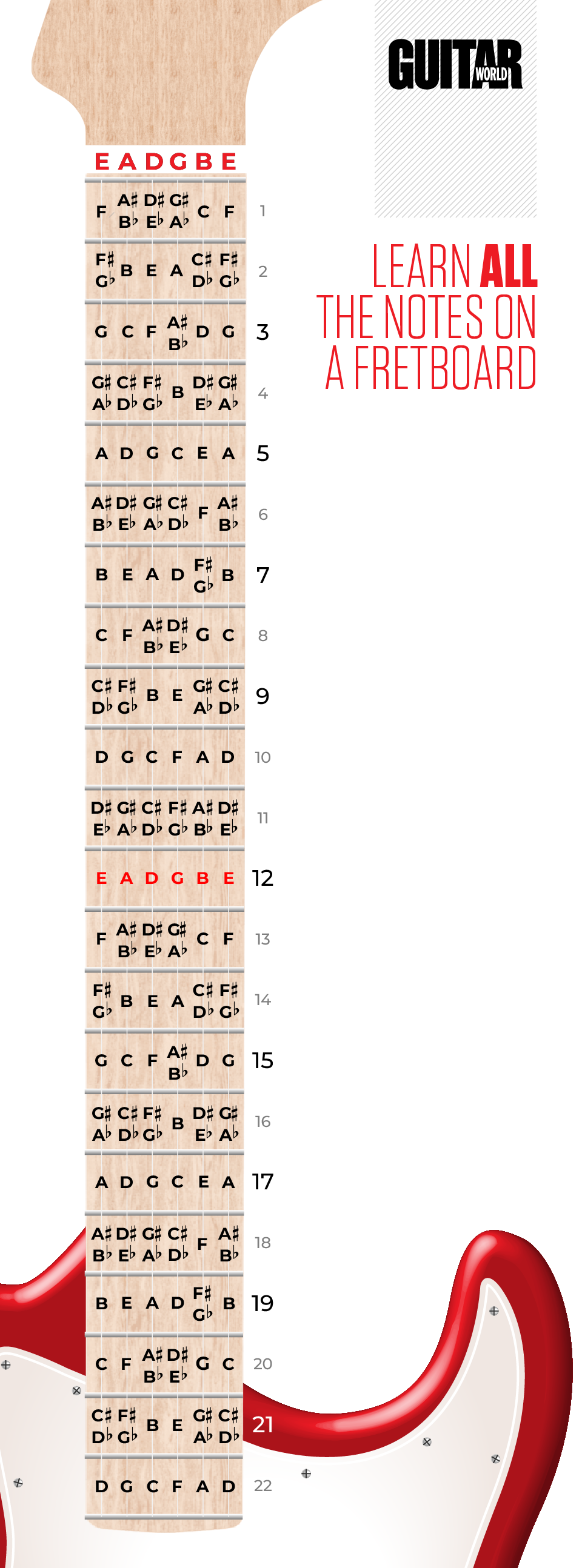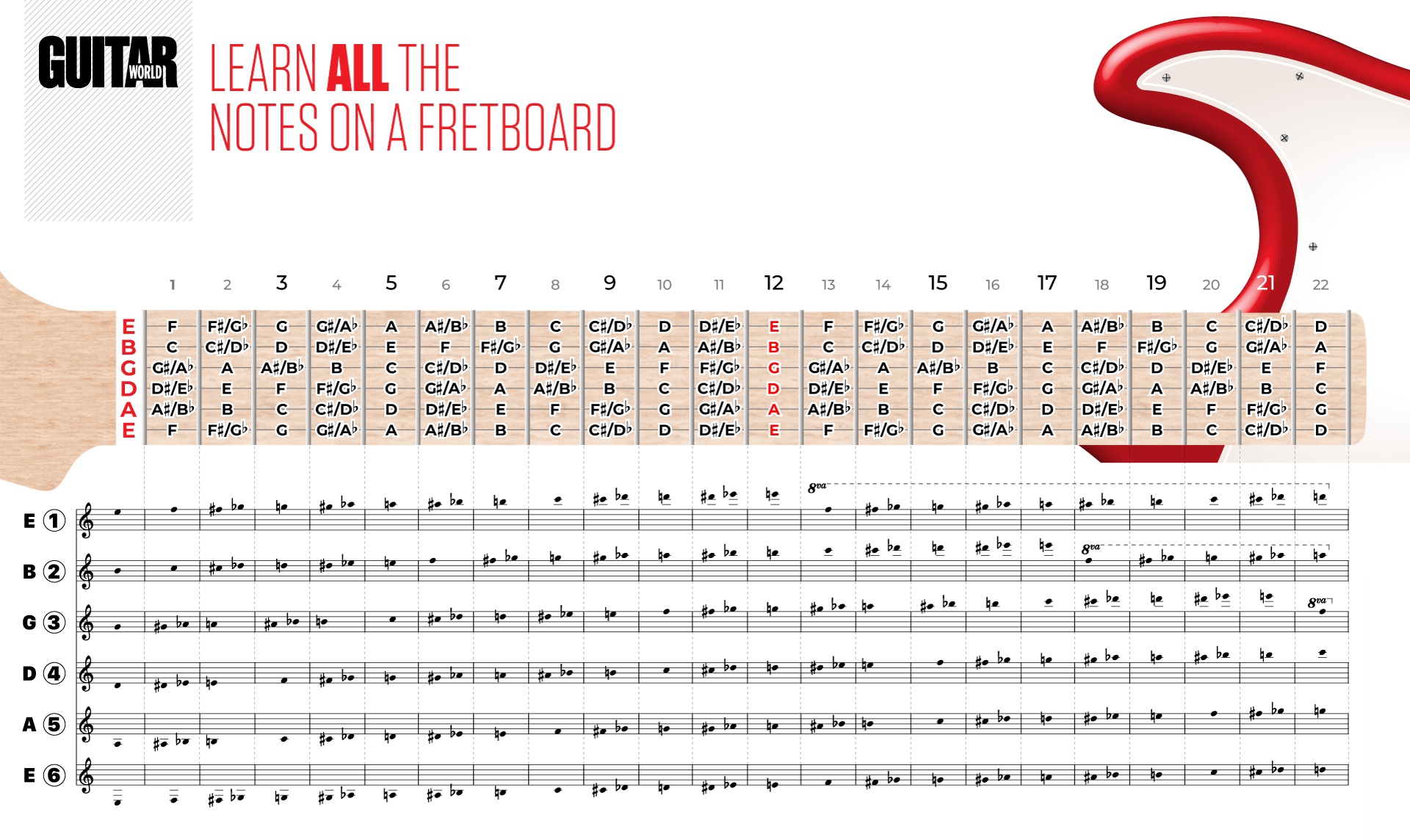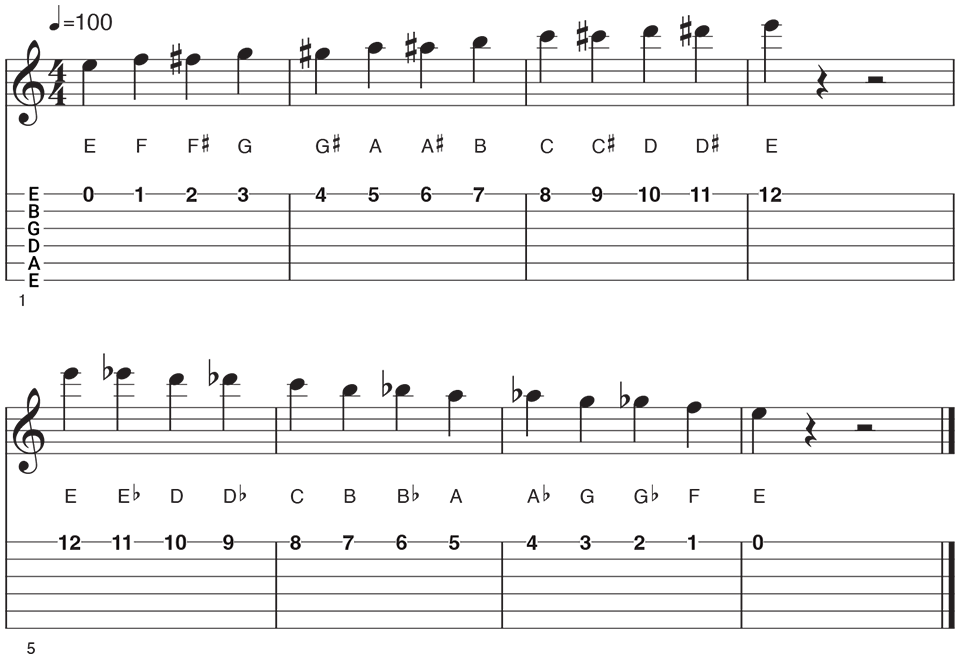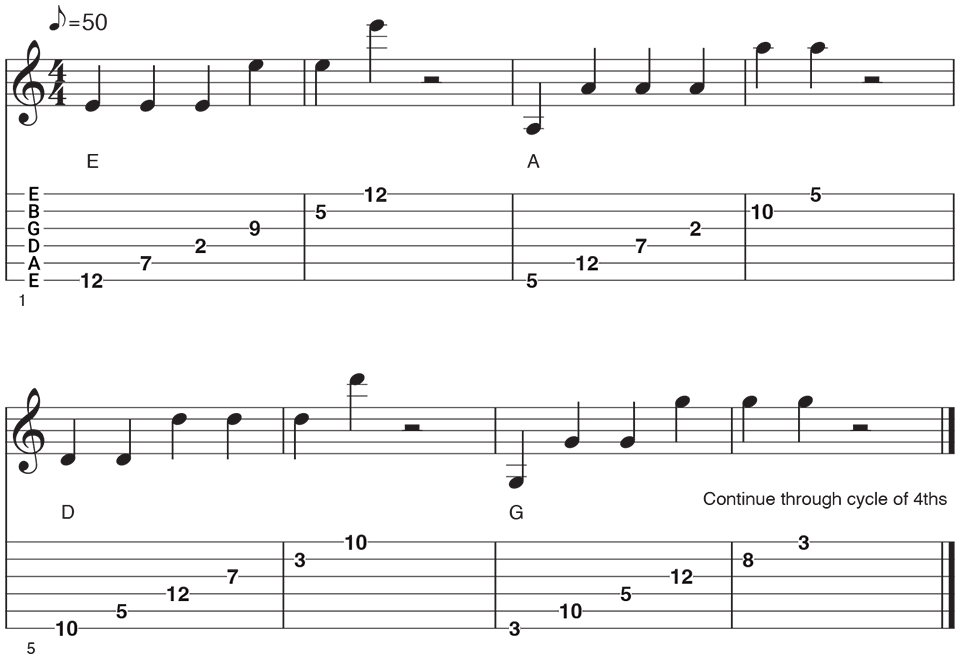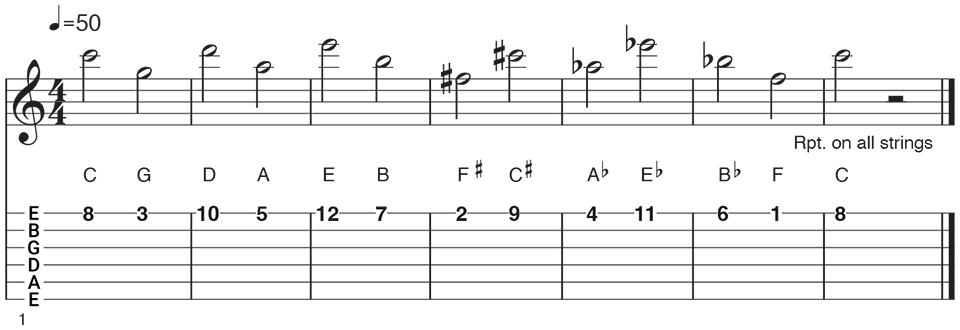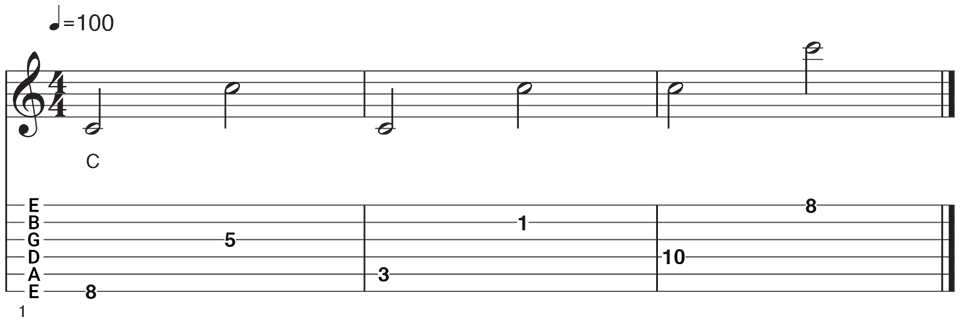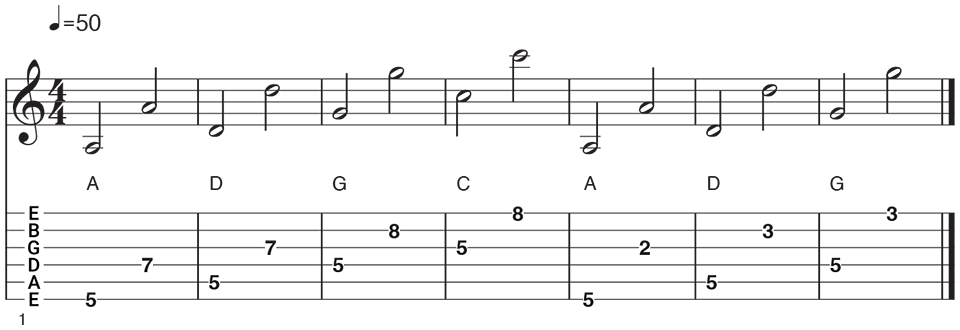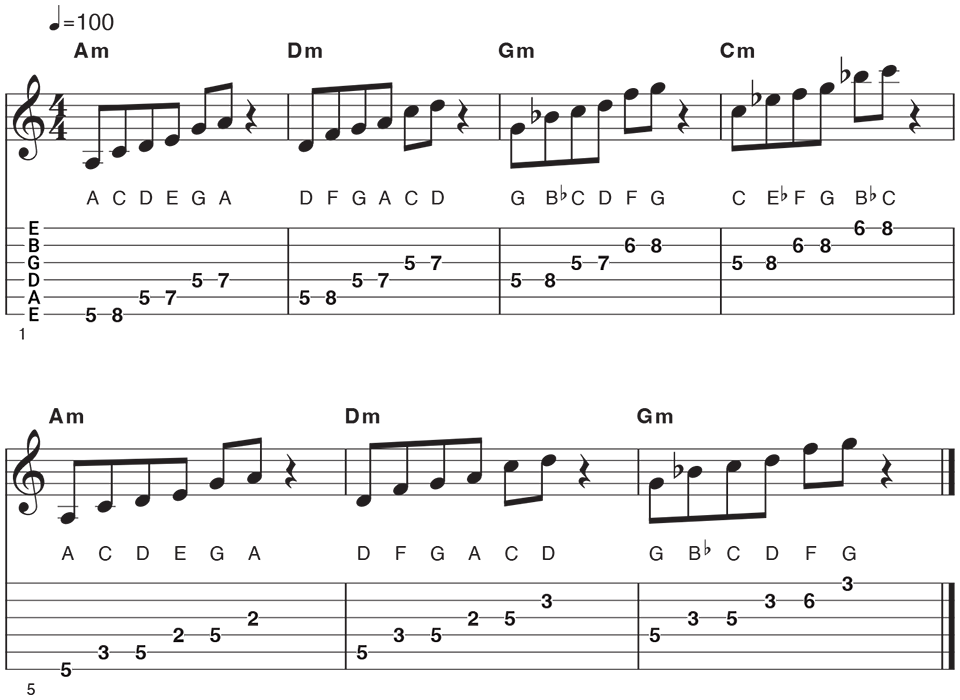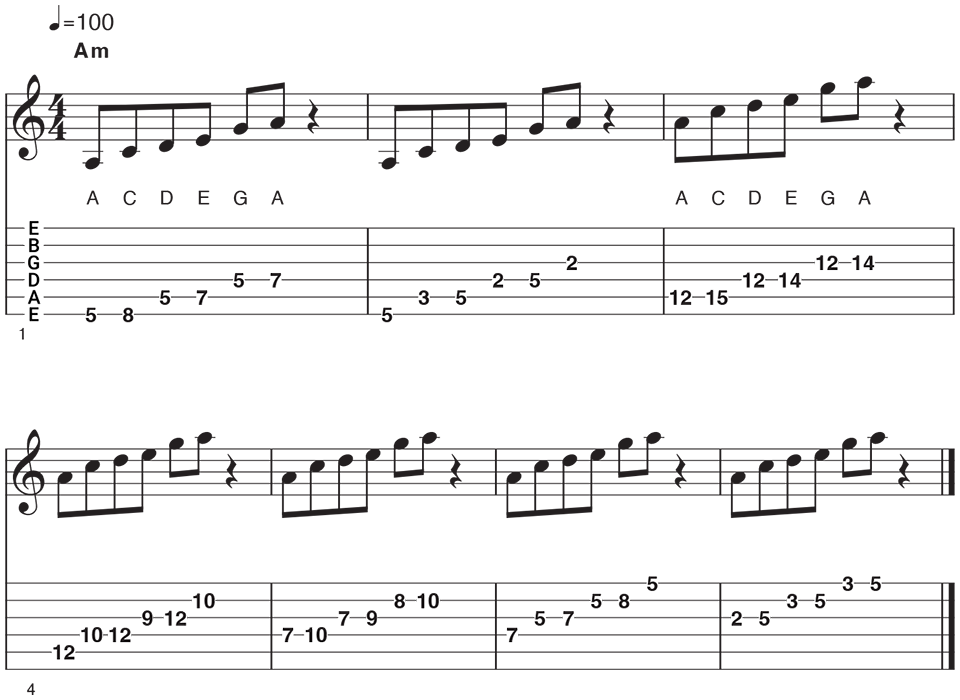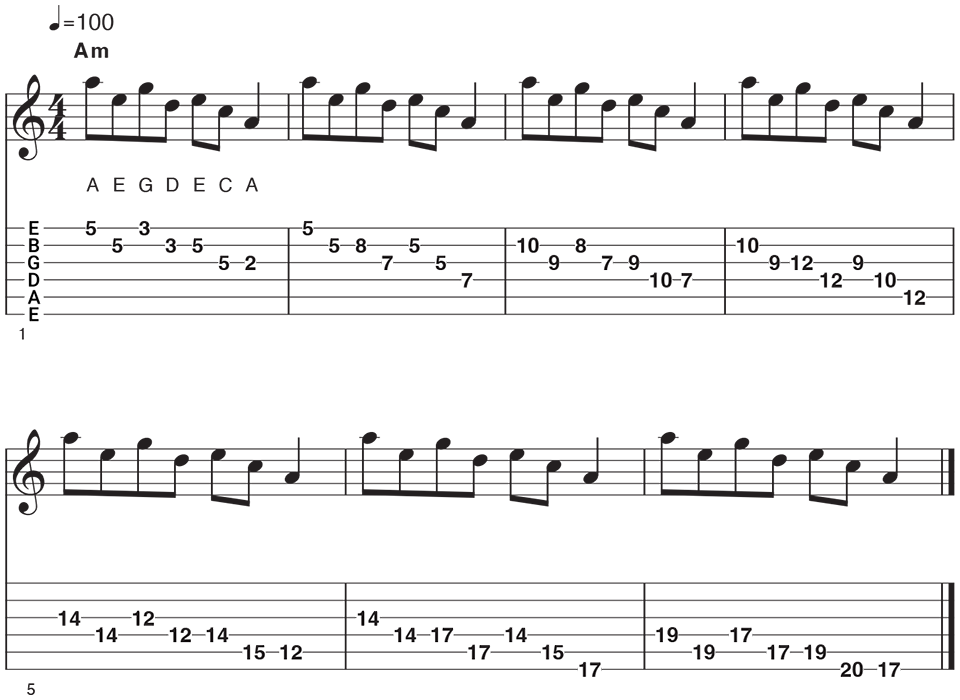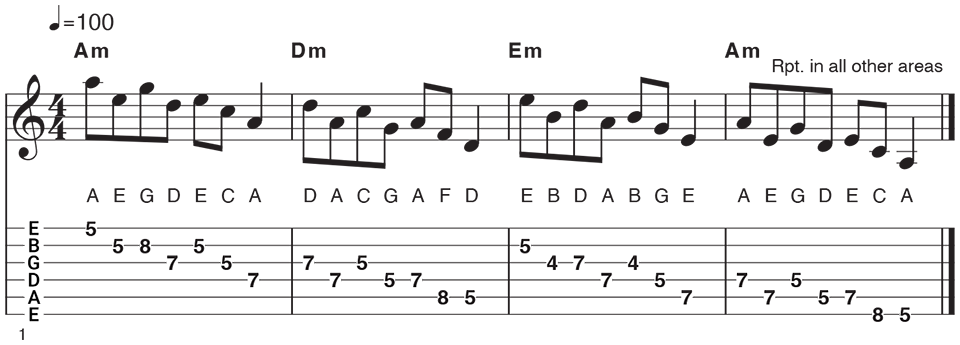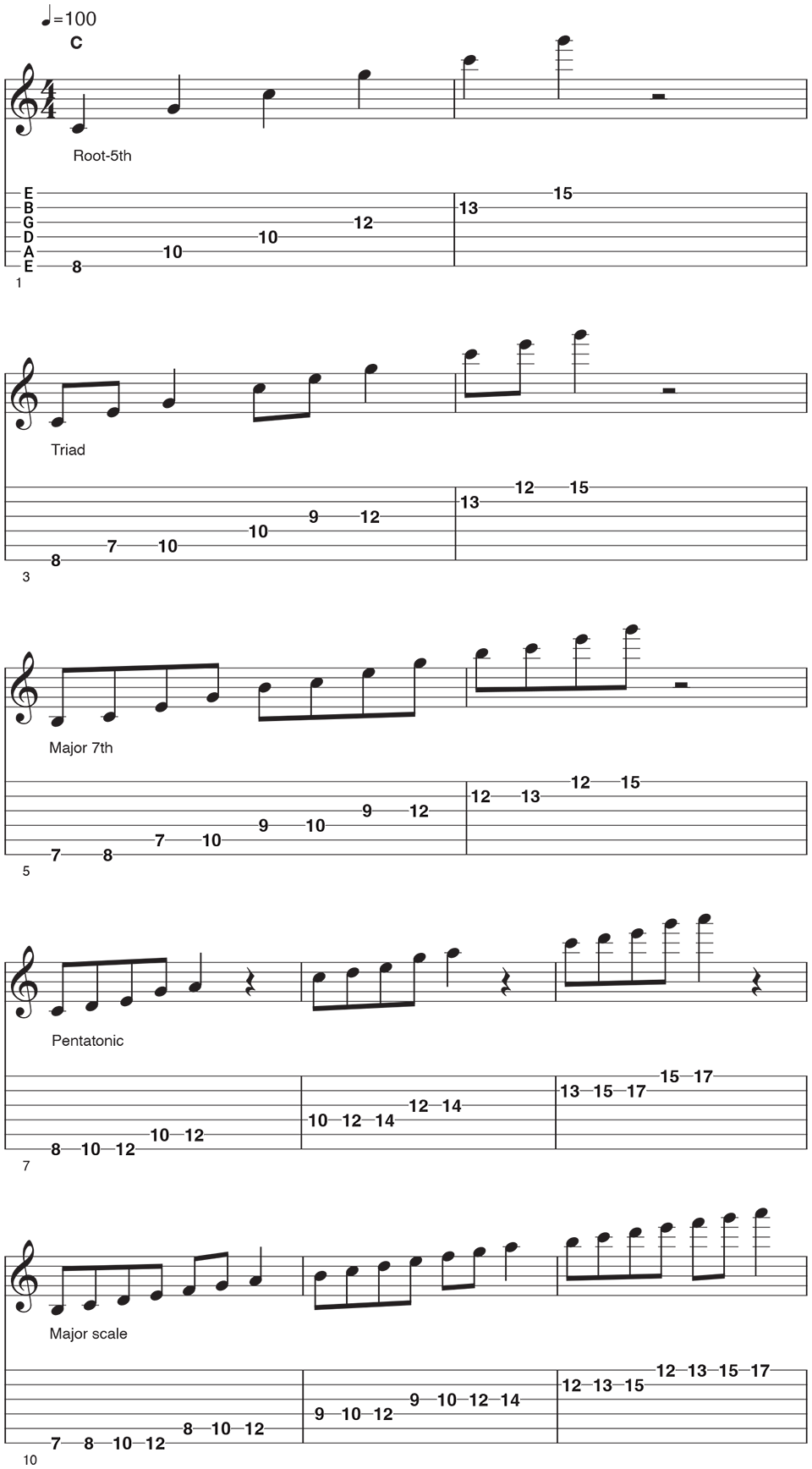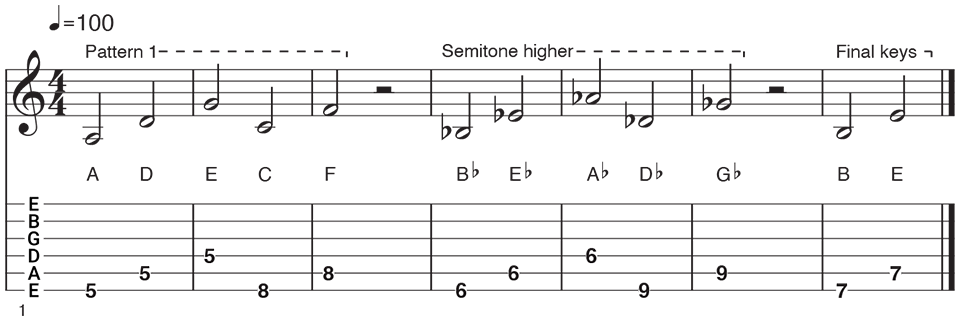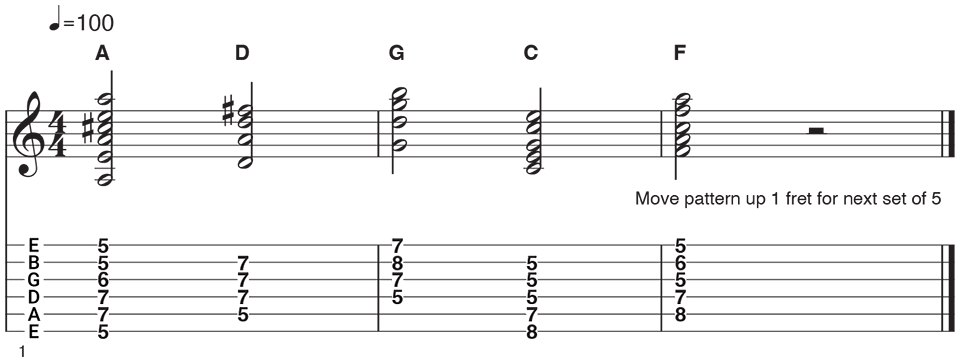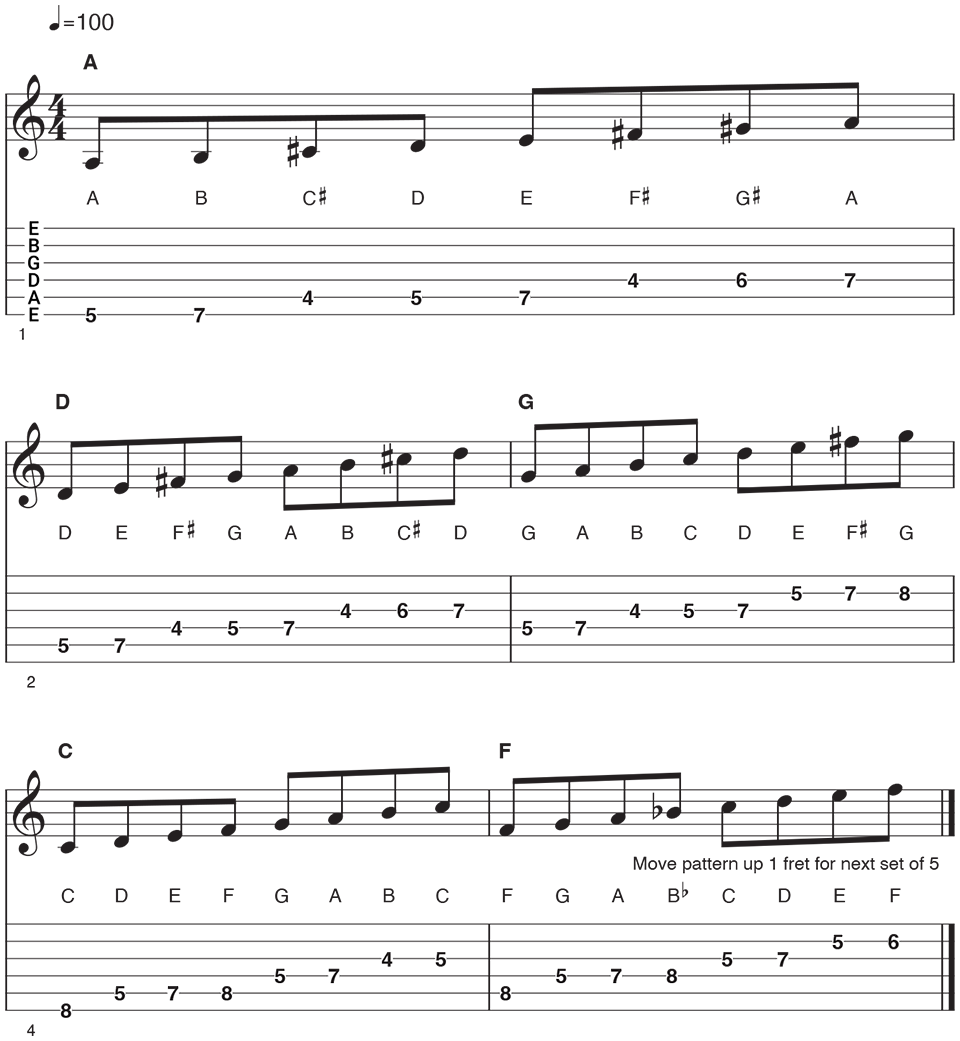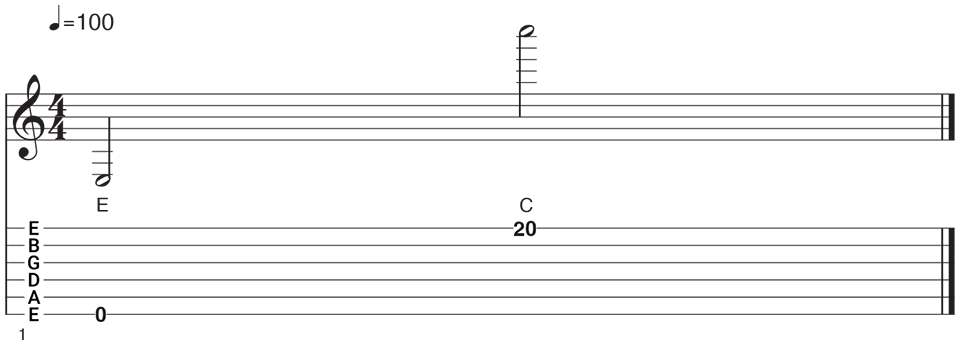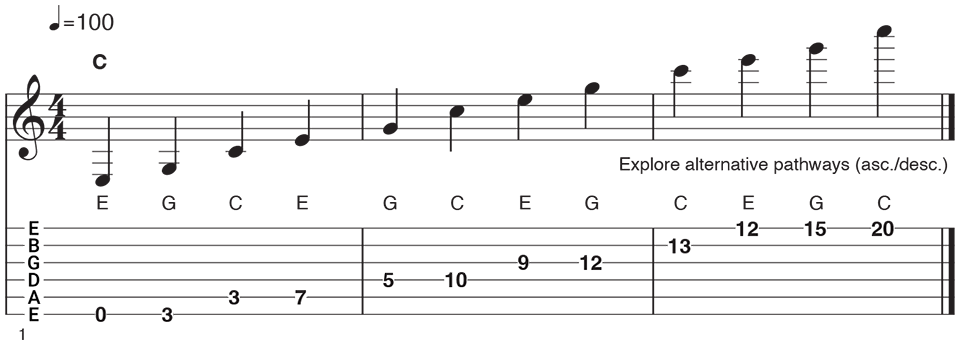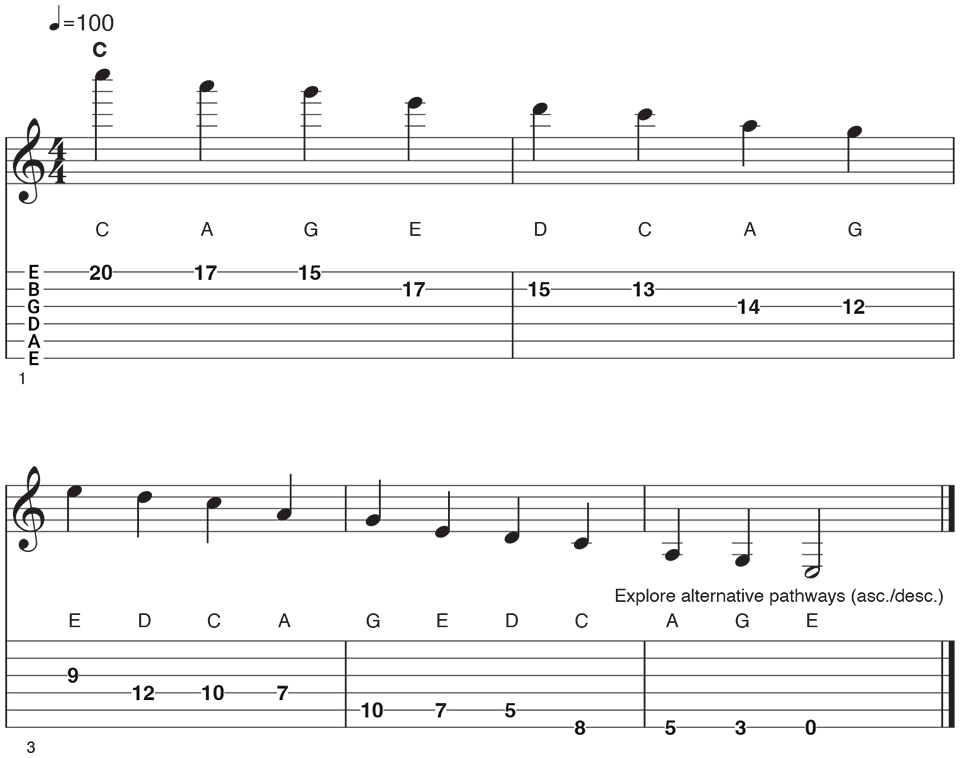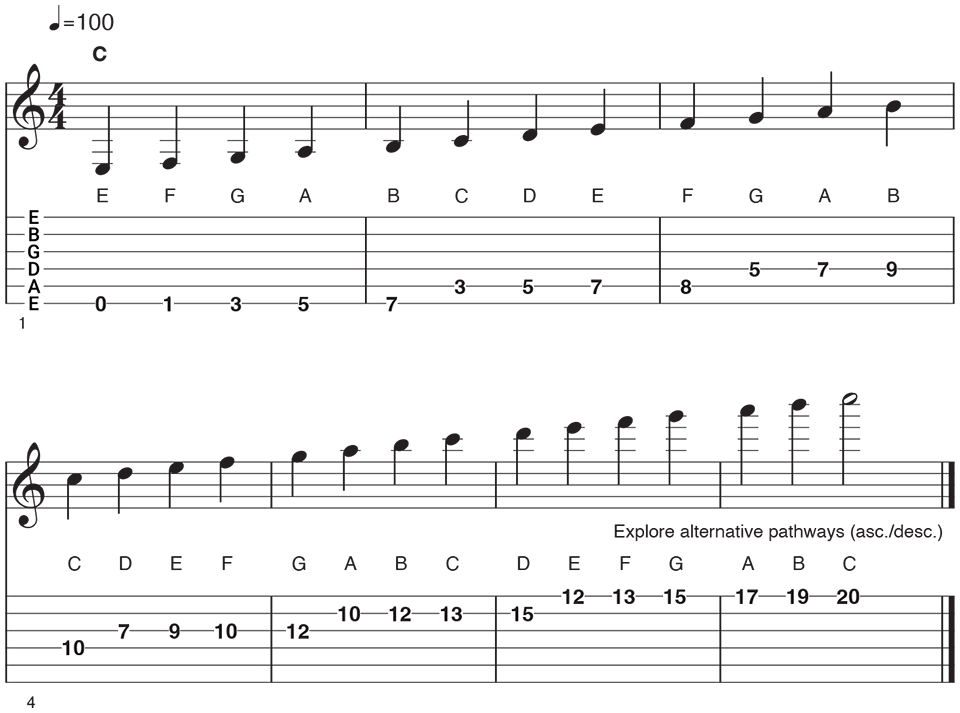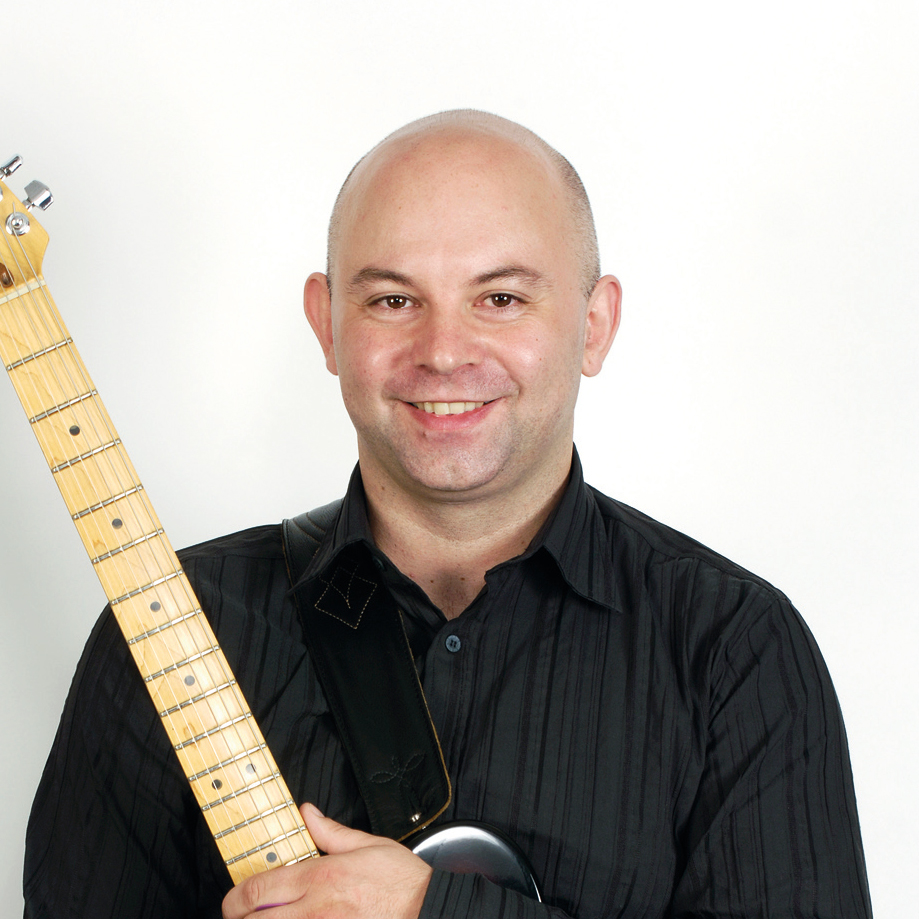Cory Wong and Joe Satriani are right – knowing where the notes are on the guitar is a skill all players should take seriously. Here are 10 ways you can master the fretboard
Get ready for a deep-dive bootcamp, complete with 2 visual diagrams and 10 exercises that will increase your confidence and knowledge of the fingerboard

Cory Wong recently threw down the gauntlet to the guitar community when he challenged any and all budding guitarists to play any note, on any string, with no hesitation whatsoever. Not only that, he argued a player cannot be considered 'advanced' unless they can pass the test – and Joe Satriani agreed with him.
Knowing the notes on the fretboard in standard tuning is a considerable asset for any guitarist. It will allow you to reposition any musical phrase through any number of fingerings until you find one that best suits your technique, style and tone.
Your improvisational skills will improve, too, as you’ll have a more direct connection to where notes are and where crucial structures built around these notes can be positioned. This relates as much to chord shapes and arpeggios as pentatonic phrases and mode-based licks. You may even have aspirations to go fully pro, which will most likely require razor-sharp notation reading skills.
But let's be honest: the guitar can be a particularly difficult instrument to negotiate. There are multiple locations for the same note, and you can move both up and down the length of each string – plus across the strings – to change the pitch both up and down.
So, the trick is to consider both of these directions of travel simultaneously, appreciating that notes go up in pitch the closer you get to the guitar's body as well as when moving from thick strings to thin. You could consider the guitar like six staggered pianos, all from slightly different starting points and with a progressively brighter tone as we travel from the lowest to the highest.
FRETBOARD DIAGRAMS
The Big Picture – All the notes on the fretboard
By using this fretboard diagram you will be able to accept and complete Cory Wong's challenge – all twelve C notes on the fretboard nailed! You did know there were twelve C notes on a 22 fret guitar, right? If not, now you do!
The Even Bigger Picture – All the notes on the fretboard and how they look in notation
This diagram aligns the notes on the fretboard with how they look on the music stave. Still keeping with the C note, notice there are five fretboard places across five strings to play the guitar's same middle C. On the five-line music stave, this C is in the gap between the third and second lines. If you want to find the notation via the fretboard diagram, the brightest sounding option for this is the 1st fret on the second string.
All the latest guitar news, interviews, lessons, reviews, deals and more, direct to your inbox!
All five places provide different tones – thinner strings are brighter, thicker strings are warmer – meaning the exact same note to be coloured in different ways. In contrast, this same C note is only playable in one place on the piano. Pretty mind blowing, eh?
Tip: in the bottom left of each of these diagrams there is a square with four outward facing arrows. Click on it and the diagram will increase in size so you can see everything more clearly. If you're reading this on a desktop computer, now grab and drag the diagrams onto your desktop so these 'fretboard dictionaries' are always at hand for future referencing.
10 WAYS TO KNOW THE FRETBOARD
The 10 examples that follow provide a progressive collection of activities and visualization concepts that will allow you to see the guitar's layout. They will encourage clarity and confidence, building up your understanding of note geography that will make the guitar’s challenges become one of the instrument’s main assets.
A methodical approach will also allow you to personalize your tone. The subtle difference of an identical pitch played on different strings can contribute a lot to the nuances of expression, articulation and delivery – a detail that is acknowledged by many legends, from Jimi Hendrix to Steve Vai.
Alongside learning the note names, it’s also really helpful to acknowledge the intervallic value of each note you play in relation to the home key. So, Cory’s C note challenge takes on a different quality if it’s functioning as the root of a C major chord rather than, say, as the minor 3rd of an A minor chord.
So work through the following 10 examples in order and be patient. It takes time to develop fluency with these exercises, so little and often is the best strategy. Perhaps take one exercise per day over a ten-day cycle, or even stick with one for a whole week.
Once you have accumulated these skills, it matters not in the slightest how long it took for you achieve this, only that you had the determination and faith to see it through. As always, we’d like to wish you the best of luck – we're sure Cory will heartily endorse your efforts!
1. Define landmarks
We begin with three short examples, which define some consistent and reliable landmarks along each string. In them, we're acknowledging the open tuning and therefore the octave above found at the 12th fret for every string (assuming that we’re in standard tuning). Then using the 5th fret tuning method (except the third & second strings, four frets apart) provides another useful landmark at the 5th, the 12th and all the way up at the 17th fret.
As with all these examples, play the note and say the note's name. By doing this, you'll marry the fretboard's geography, the pitch's sound and the note name together.
2. Finding natural notes relative to landmarks
Now that landmarks have been sorted, the next five examples show how all the other notes sit in relation to them. The trick is to remember that with the exception of E-F and B-C, all other natural notes (not sharp or flat) are two frets apart. With this in mind, you can find any natural note by moving up or down from the nearest landmark.
In Example 2c, you’re finding the note F in relation to the closest landmark on every string. In Example 2d, all the natural notes along the lowest two strings are shown, and then in Example 2e, you're up on the highest two strings to map out all the sharps and flats.
As before, play the note, say the name.
3. One note, all strings
We're back to Cory's topic of conversation – the challenge to find a specific note on every string in turn and in time. Of course, you can work on this without your metronome, although your practical understanding of the fretboard will improve exponentially if you can develop that ability to deliver the right note at exactly the right time.
For the sake of brevity here, we’re just presenting four possible note selections, moving through a cycle of 4ths. If you have the time and the inclination, moving through the remaining eight keys (ie C F Bb Eb Ab Db F# B) would be a very positive step.
4. One string, all notes
You can use this example as a fretboard workout and a theory challenge at the same time. The aim is to find every note along a single string, but rather than move up in semitones, we’re cycling through a sequence of perfect 5ths.
Starting on C, we need to figure out the 5th of a C chord. Our answer here is G, so we find this note on the same string. G gives us D, D gives us A, and so on. Before returning to our initial C starting note, we will have played each and every other note, once and with no repetition. Our example here uses just the first string, but remember to explore this with every other string.
5. Outline octaves
We're back again to Cory's challenge – visualizing all the practical octave shapes is a great musical way to develop fluency when moving a note like C around the fretboard. Here, we’re defining both forward (moving towards the body of the guitar) and reverse (in the direction of the headstock) octave patterns.
We’re also defining the five ‘CAGED’ areas, specifically the locations that relate to the movable C, A, G, E and D chord shapes plus associated scales and arpeggios that we need to play in all keys and all areas.
It’s important to acknowledge the one-fret displacement needed when crossing over between the third and second strings. This is reflected in Example 5d, which is based either side of the 5th fret and uses C and other notes.
6. Octaves fleshed out
Now that we’ve defined these octave locations across the fretboard, the next task is to fill these up with a selection of appropriate harmonic and melodic information. In this example, we’re using the A minor pentatonic scale (A C D E G), firstly shifting through one octave forward shapes, and then repeating with reverse shapes from similar points of origin.
In Example 6b, we’re repositioning a one octave forward-and-reverse shape through all the possible complete shapes we can find.
7. Phrase through all practical permutations
To develop a useful application of these octave locations further, here we’re moving a typical classic minor pentatonic phrase. This is rather like how Robben Ford might play A minor pentatonic phrases, through all the practical forward and reverse permutations.
In Example 7b, we take this same motif and see how it can be transposed to outline a Im-IVm-Vm chord sequence (in A minor: Am7 Dm7 Em7) in just one fretboard location. Dont' forget: play the note, say the note out loud.
8. Explore the symmetry (low/mid/high)
Another great way to visualize the guitar fretboard is to consider each pair of strings, (1-2, 3-4 and 5-6) to be a symmetrical representation of low, mid and high octave information. This example begins by defining a root-5th relationship in each octave using C and G notes. Remember the jump across the third string to second string requires an additional 1-fret leap to compensate for the reduced distance tuning between these strings.
We add more information to each group by defining triad (R 3 5), major 7th (7 R 3 5), major pentatonic (R 2 3 5 6) and major scale (7 R 2 3 4 5 6) fingerings.
We can also explore inverting these fingerings, where any notes found on the lower of each pair can be situated on the higher string, and vice versa, illustrated here with an inverted fingering for the major pentatonic (G A C D E).
9. The pattern to find all keys
Here’s a really useful pattern of five notes moving through the cycle of 4ths. To find the next group of five keys, move the same exact pattern up by a semitone, and to find the remaining two keys for the complete set of twelve you move up yet another semitone. Once you've established these important locations, use these points as root notes to create harmonic or melodic structures.
Next, we're looking at the five movable major chord shapes, along with transposed movable one octave cells for the major scale. Organizing notes in this way will allow you to find all keys in one precise and contained fretboard location. As always, play the notes, say the names.
10. Lowest note to high C (improvised pathways)
Let’s round things off with a Steve Vai/Allan Holdsworth/Julian Lage endorsed method of playing any scale, pentatonic, arpeggio or triad from the lowest note, all the way up to the highest. Full disclosure: we’re stopping at high C to accommodate most types of guitar, be they with 21, 22 or 24 frets.
The idea here is to improvise each pathway, rather than memorize the fingering while saying the note names out loud as you go. You don’t need to come back down the same way that you go up. You’ll notice here that we’re ascending and descending using different but complimentary forms, such as the triad (C-E-G), the major pentatonic (C D E G A), and the major scale (C D E F G A B).
PLAYERS IN COMMAND OF THE FRETBOARD
Eric Johnson – Zap
Eric Johnson unleashed a staggering amount of notes during his highly rated live show, Live from Austin TX. The intro to his instrumental, Zap, is no exception as it covers pretty much his Stratocaster's entire range with little room to catch breath.
It’s clear that he is incredibly comfortable with the whole fretboard and is equally at home phrasing in each area with complete control, articulation and expression. Having sometimes spent several weeks deciding on the best note placement for a phrase, the results show for themselves.
His understanding of the fretboard and the best places to play the right notes is why Johnson is revered by so many guitarists around the world. As the Steely Dan and Doobie Brothers guitarist Jeff 'Skunk' Baxter once said, Johnson could be the result "if Jimi Hendrix had gone on to study with Howard Roberts for about eight years". Modern virtuosos such as Joe Bonamassa, Andy Timmons and Andy Wood are of a similar mind.
Julian Lage – Etude
Lage’s beautiful solo piece demonstrates his complete command of the fretboard, with an exquisite sense of harmony, melody, dynamics and feel. There’s sense of both total freedom and complete control to Julian’s playing here, where anything is possible, with all musical options on the table at any time. Watch how he navigates the fretboard with ease and full understanding of how to get the notes he wants to sound great.
Steve Vai – For The Love Of God
Steve Vai’s playing here is expressive, dynamic and technically terrifying. For The Love Of God is his trademark instrumental, showcasing his considerable chops and impressive fretboard knowledge. It achieves the perfect balance of intellect, ability and emotion, and has not unsurprisingly become a staple of Steve’s live sets over the years.
John is Head of Guitar at BIMM London and a visiting lecturer for the University of West London (London College of Music) and Chester University. He's performed with artists including Billy Cobham (Miles Davis), John Williams, Frank Gambale (Chick Corea) and Carl Verheyen (Supertramp), and toured the world with John Jorgenson and Carl Palmer.
- Jason SidwellTuition Editor – GuitarWorld.com, GuitarPlayer and MusicRadar.com
You must confirm your public display name before commenting
Please logout and then login again, you will then be prompted to enter your display name.
